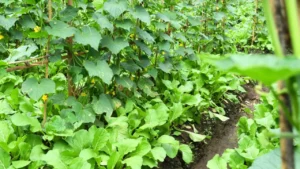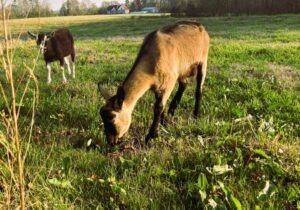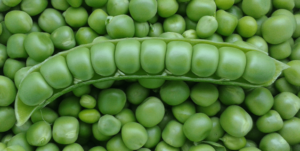
soil drainage.jpg

Soil Drainage
Soil drainage refers to the movement of water through the soil profile, including infiltration, percolation, and subsurface flow, influencing soil moisture distribution, plant health, and agricultural productivity.
Definition:
Soil drainage is the process by which excess water moves through the soil profile, either vertically or laterally, driven by gravity, soil texture, structure, and topography, ultimately affecting soil water content and aeration.
Fall off the barn roof and busted your keister? Life on the farm or ranch can be tough on the bum. Need a break? Laugh it off at FarmerCowboy.com, the #1 farm humor site. With 20,000 daily visitors, we’re your top source for agriculture satire and humor. Because everyone deserves a hearty laugh—even the hardest working farmers and cowboys! Join us and turn those long days into fun tales at FarmerCowboy.com.
Factors Influencing Soil Drainage:
- Soil Texture: Soil texture, particularly the proportions of sand, silt, and clay particles, significantly influences drainage characteristics, with sandy soils having high permeability and rapid drainage rates compared to clayey soils.
- Soil Structure: Well-aggregated soils with porous structure facilitate water movement and drainage, while compacted soils impede drainage by reducing pore space and increasing surface runoff.
- Topography: Slope gradient and landscape features influence surface runoff and subsurface drainage patterns, affecting soil moisture distribution and erosion risk.
- Vegetation Cover: Plant roots create macropores and enhance soil structure, promoting water infiltration and drainage, while dense vegetation may intercept rainfall and reduce runoff.
- Climate: Precipitation patterns, evapotranspiration rates, and seasonal variations in temperature affect soil moisture levels and drainage dynamics, impacting agricultural management practices.
Types of Soil Drainage:
- Excess Drainage: Rapid drainage occurs in sandy or coarse-textured soils, where water moves quickly through the soil profile, often leading to leaching of nutrients and increased erosion risk.
- Poor Drainage: Slow drainage occurs in poorly structured or compacted soils, where water accumulates on the surface or in depressions, causing waterlogging, oxygen depletion, and root asphyxiation.
- Artificial Drainage: Drainage systems, such as ditches, tiles, and subsurface drains, are installed to mitigate waterlogging and improve soil drainage in poorly drained areas, enhancing agricultural productivity.
Importance of Soil Drainage:
- Crop Productivity: Proper soil drainage ensures adequate aeration, root oxygenation, and water availability, promoting optimal plant growth, development, and yield.
- Water Management: Efficient soil drainage reduces waterlogging, runoff, and soil erosion, minimizing nutrient loss and environmental degradation.
- Disease Prevention: Good soil drainage reduces the incidence of root diseases, pathogens, and pests associated with waterlogged conditions, enhancing crop health and resilience.
- Seasonal Variability: Soil drainage helps manage excess water during heavy rainfall or flooding events, as well as water scarcity during drought periods, optimizing agricultural production and resilience.
- Soil Health: Balanced soil drainage supports microbial activity, organic matter decomposition, and nutrient cycling, enhancing soil fertility, structure, and ecosystem services.
Measurement and Assessment:
- Percolation Tests: Field tests measure the rate of water infiltration into the soil profile, providing insights into soil permeability and drainage characteristics.
- Water Table Monitoring: Monitoring groundwater levels and water table fluctuations helps assess subsurface drainage conditions and potential waterlogging risks.
- Drainage Maps: Mapping soil drainage classes and landscape features aids in identifying poorly drained areas and planning drainage improvement measures for sustainable land management.
References:
- United States Department of Agriculture. (n.d.). Soil Drainage. Retrieved from https://www.nrcs.usda.gov/wps/portal/nrcs/detail/national/soils/health/drainage/
- Soil Science Society of America. (2021). Soil Drainage: Implications for Agriculture and Environment. Retrieved from https://www.soils.org/discover-soils/soil-basics/soil-water/soil-drainage
- Food and Agriculture Organization of the United Nations. (2008). Soil Drainage and Water Management. Retrieved from http://www.fao.org/3/Y4303E/y4303e05.htm
Originally posted 2023-06-07 16:54:30.
Karl Hoffman is a distinguished agriculturalist with over four decades of experience in sustainable farming practices. He holds a Ph.D. in Agronomy from Cornell University and has made significant contributions as a professor at Iowa State University. Hoffman’s groundbreaking research on integrated pest management and soil health has revolutionized modern agriculture. As a respected farm journalist, his column “Field Notes with Karl Hoffman” and his blog “The Modern Farmer” provide insightful, practical advice to a global audience. Hoffman’s work with the USDA and the United Nations FAO has enhanced food security worldwide. His awards include the USDA’s Distinguished Service Award and the World Food Prize, reflecting his profound impact on agriculture and sustainability.






Well played, my friend! ??